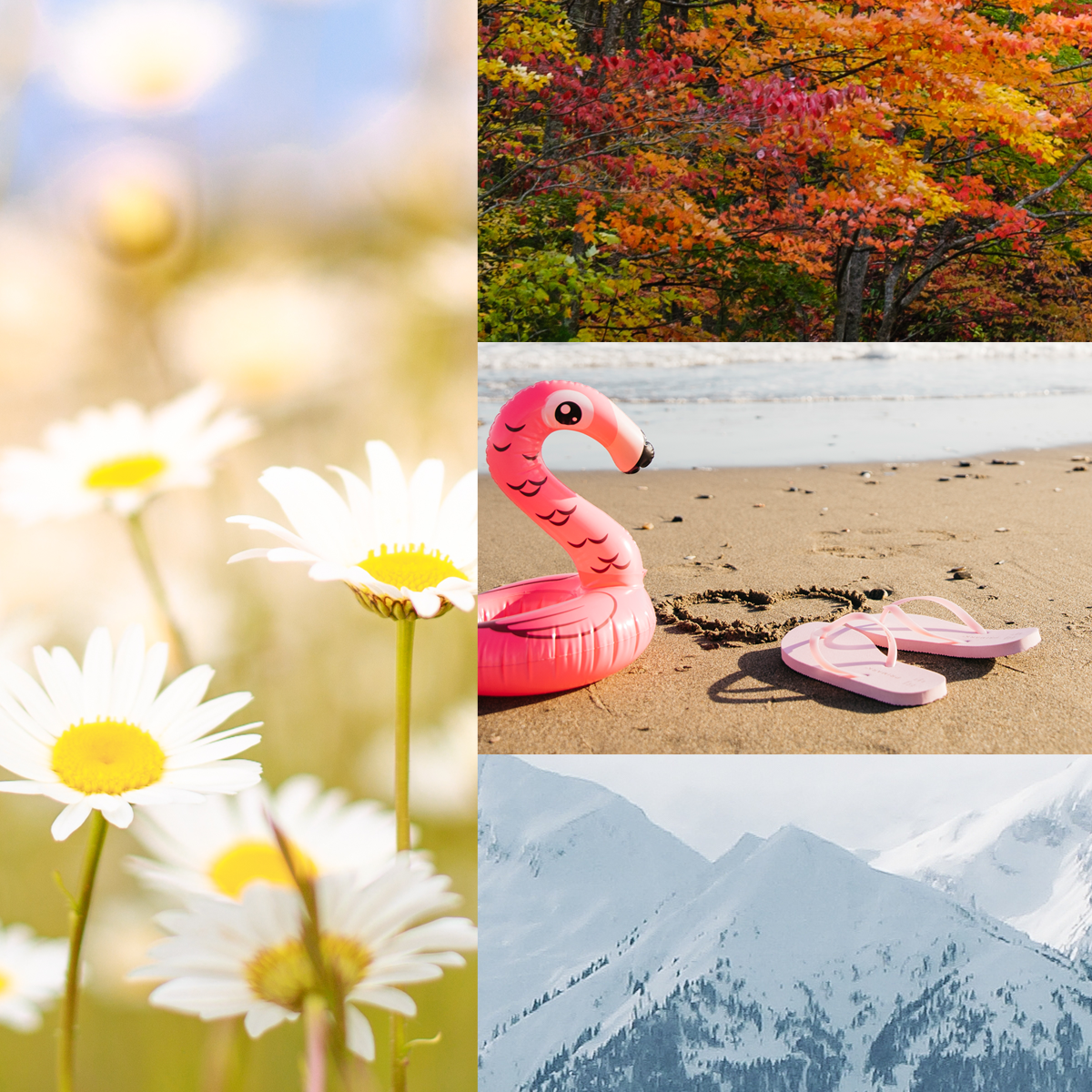Meteorological seasons (weather seasons) are the four weather seasons we live our lives around. Each season offers a different condition of more or less consistent weather, such as Spring being super rainy and wet and summer being nice and hot. A common question is, “What is your favorite season? “If you have asked this question before, I’m sure you have an answer for it as well. What if I were to tell you that this favorite season of yours can be explained through science?
Seasons tend to change the environment around us, giving us more or less sunlight, changing the temperature, and affecting the weather. Sunlight plays a massive role in how we act and behave and can be crucial in our mood and feelings. Each season has a different amount of sun, which can drastically change how we feel between each season, though this depends on the person. A big downside to every season comes in the form of SAD, or seasonal affective disorder, which is a disorder that makes us depressed during the changing of seasons and can lead to many issues. However, the amount we suffer from it varies between person and season. Despite this, we can still find the good out of every season.
Spring is the transitional season, characterized by its mild temperatures, longer days, and the resurgence of plant life, along with migrated animals. Spring brings us more sunshine than its corresponding season, eventually preparing us for the ultimate sunshine season. Spring often brings an optimistic mood with its sunlight, giving people more energy and motivation. The warmer temperatures and longer days can give us that boost of energy to be more productive and active. With better conditions from the snowy Winter, Spring can bring about more social interactions with the warming weather and help resurrect plant life, leading to brighter moods. Despite this, there are things to be cautious about, such as allergies, which can cause anxiety due to a change in weather and, in exceptional cases, can lead to people feeling more motivated to harm themselves, as reported by the National Center for Health Statistics. We asked high school student Brett Walker how he thought about Spring, and he said “I always loved Spring because of the rain. I remember always running around my backyard in the rain as a kid!”
Summer is our hottest and brightest season out of the four, giving us the most sunlight and the most sociable time of the year. Summer gives us many things, such as excessive sunlight exposure, increasing our serotonin levels, making us happier, and producing vitamin D. Along with social interaction, enhanced physical activity is a significant factor that makes summer all the more delightful. Summer also helps us connect to nature because plants are at their peak of color, and temperature conditions are in our favor so that we can explore outside with little trouble. What is up always has a downside, including heat and humidity issues, seasonal affective disorder, and other issues like body image and finance issues. Avaline Sissie, a lifeguard for an indoor pool, gave her opinion on Summer, “Summer has always been a favorite of mine because I can go out with my friends, wear nice clothes, and go to the beach almost every week!”
Fall, or Autumn, is our second transitional season that brings cooler temperatures and darker atmospheres. Fall brings us shorter days and longer nights, as it is more known to bring spirits down. SAD is a significant factor in fall and leads many people to dislike the season. With the decreased sunlight and color change in leaves and plants, fall brings a more depressive mood and leads to lower serotonin levels, giving us more of the blues. Melatonin is increased during this season, a hormone for sleep, leading to excessive sleeping and sluggish feeling. While fall is more known for its sadder times, it also brings us a nostalgic and calming mood that is perfect for anyone of a quiet and calm nature. The melancholy, moody environment of fall is ideal for long walks and those wanting a peaceful atmosphere. As a person who loves fall and what it brings, the more depressive and cold aspects of the season bother me, much less due to the peace of the season.
Finally, Winter is the coldest and darkest season, with its short and cold days giving us the wildest and prettiest weather types. Winter days are statistically the saddest time of the year, potentially leading to the “Winter blues” and SAD, characterized by decreased energy and difficulty concentrating. The reduced sunlight in Winter can negatively affect our sleeping cycle, leading to fatigue and difficulty concentrating. The reduced sunlight also affects our serotonin and melatonin levels, reducing our serotonin levels and increasing our melatonin levels, making us constantly drowsy and tired. The cold weather and short days can increase social isolation, leading to a stronger feeling of sadness and loneliness. Winter isn’t all bad, though, because of how beautiful the weather looks, such as the snow, and because there are a lot of school breaks and holidays during the winter season. We asked a mechanic named Donovan Stephenson what he thought of Winter, and he said “Winter has always been a favorite of mine because of how my family and I celebrate Christmas. I usually fly out to Wyoming for the Winter, and my family dresses up in Christmas clothing and opens presents under our backyard awning.”
Meteorological seasons (weather seasons) are the beauty of our planet, giving us the same variety of weather every year. What you may or may not have known is that these seasons do much more to us than what meets the eye. Seasons can affect our mood in many ways, making us happier or sadder depending on the person. But the beauty of the seasons remains the same, and we should all appreciate the seasons for what they bring and not how they hurt us.







